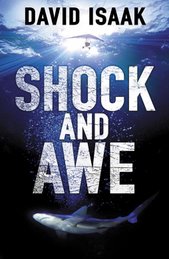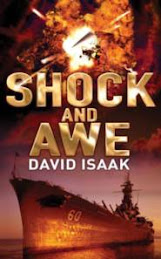 A few folks have observed that the pictures of our backyard suggested that we had somewhat odd plants. I suppose we do. And since I don't have time to write anything intelligent these days, I guess it's time to share our plants.
A few folks have observed that the pictures of our backyard suggested that we had somewhat odd plants. I suppose we do. And since I don't have time to write anything intelligent these days, I guess it's time to share our plants.Here's one of our current favorites, Solanum pyracanthum, which I believe translates to "Firethorned Nightshade," which is a rather romantic name. This one is about two months old, about 18 inches high, and promises to get a lot taller.
The popular name for these, insofar as they have a popular name, is "Porcupine Tomato." Granted, it is in the same family as the tomato (and potato, and eggplant), but quite frankly I don't see the resemblance. When it bears fruit, I'm expecting something more like little black belladonna berries, not tomatoes...but we shall see.
I believe this plant is native to Madagascar, an island filled with odd plants. But wherever it hails from, it clearly had a difficult evolutionary childhood. It is covered with spines--lovely spines that start out red at the base and flame up into a fiery orange-yellow at the tips. And they are sharp, oh yes indeed my precious, as sharp as the thorsns on any cactus I've ever met.
When I say "covered with spines," I'm not kidding. These little babies have spines on their trunk, spines on their stems, spines behind their innocent-looking flowers, and even spines on their leaves. This is a plant with issues.

I've spoken to it kindly and suggested that we don't intend to harm it, but if anything it's getting spinier. Which is fine, really, as, seen in the sunlight, the spines are almost painfully beautiful.
A fellow Californian has warned on the web that in this climate these plants, which are supposed to form a 2-3foot high bush, turn into trees. He claims to have one eight feet tall that throws seeds everywhere, resulting in an ever-encroaching army of tiny seedlings which are equipped with vicious, untouchable little spines from the moment they sprout.
It is growing with astonishing rapidity. But I assume he's exaggerating a bit...




